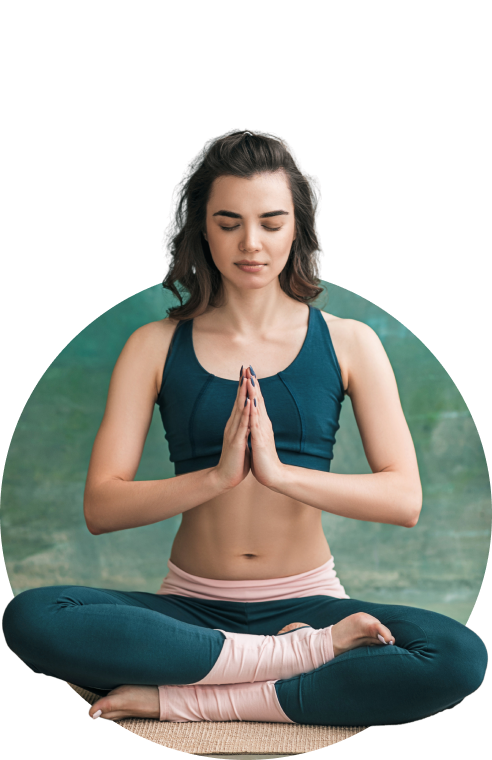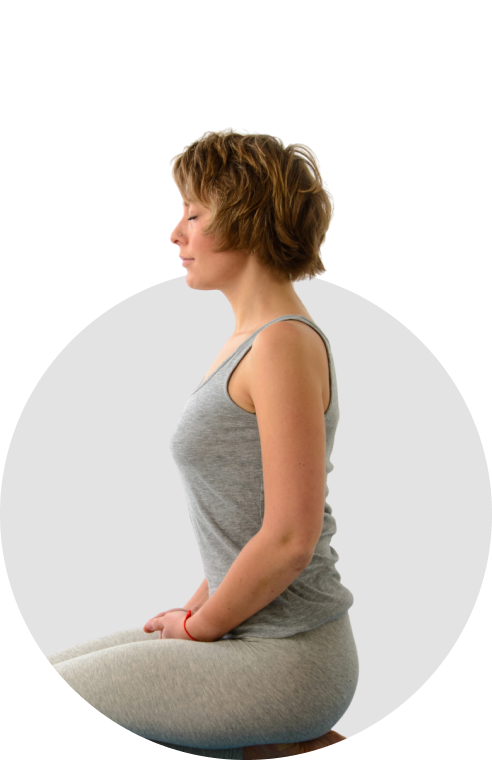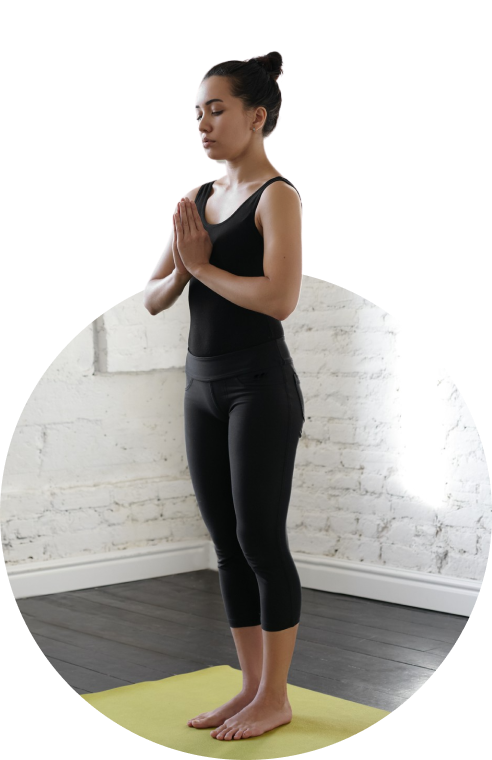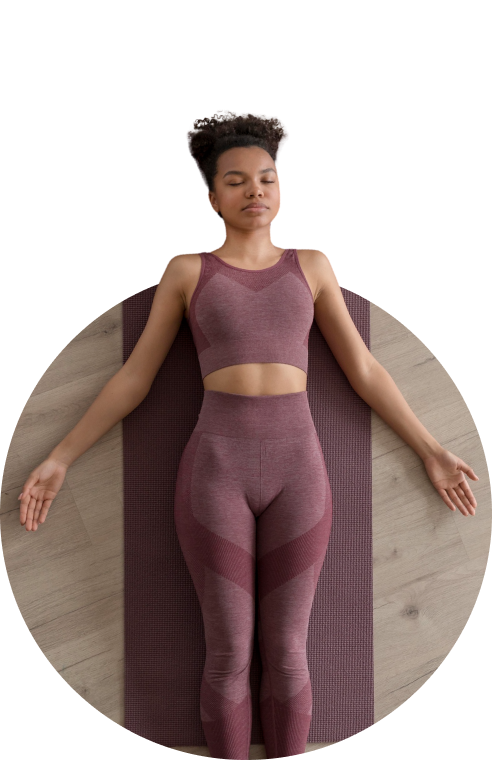Sit Down and Reflect:
Meditation For
Beginners


Meditation has transcended centuries, serving as an ancient practice that not only encourages a calm mind but also provokes self reflection, positive affirmation, improved focus, and mental clarity.
Self
Reflection
Positive
Affirmation
Improved
Focus
Mental
Clarity
The act of meditating is present in many religious traditions, including Hinduism, Buddhism, Judaism, and Jainism.
Over the years, meditation has developed beyond the realm of religion, becoming a popular practice of self-care and wellness throughout modern society — especially in the western world.
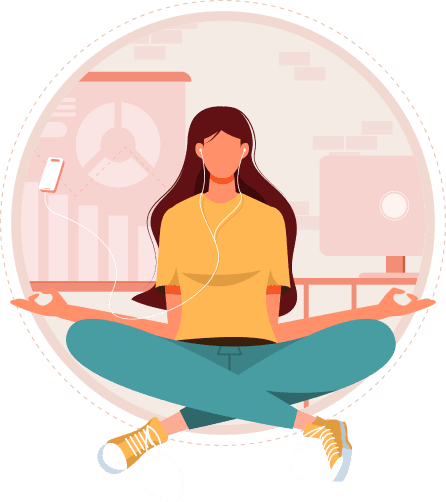
From spiritual meditation to clinical meditation, mindful reflection and relaxation take many forms, catering to a variety of beliefs, needs, and preferences.
In this article, we will provide you with essential tips for beginning your own meditation journey, so you can successfully achieve mindfulness and improved well-being. We will also explore the remarkable realm of meditation, enlightening you of its historical significance, major benefits, and efficacy.

Understanding Meditation
Vedic Age
(1500-600 BC) in India
First meditative practices emerged in ancient India during the Vedic Age (1500-600 BC).

According to many archeologists, the practice of meditation dates back as early as 5,000 BCE.
Evidence signifies that the first meditative practices were performed during the Vedic Age (1500 BC to 600 BC) in ancient India. Evidence also shows that meditation was a prominent religious aspect of ancient Egypt and ancient China.
Before meditation progressed into mainstream culture, it served as a fundamental aspect of many religions, including Buddhism, Hinduism, Judaism, Sikhism, Jainism, Taoism, Islam, and many others.

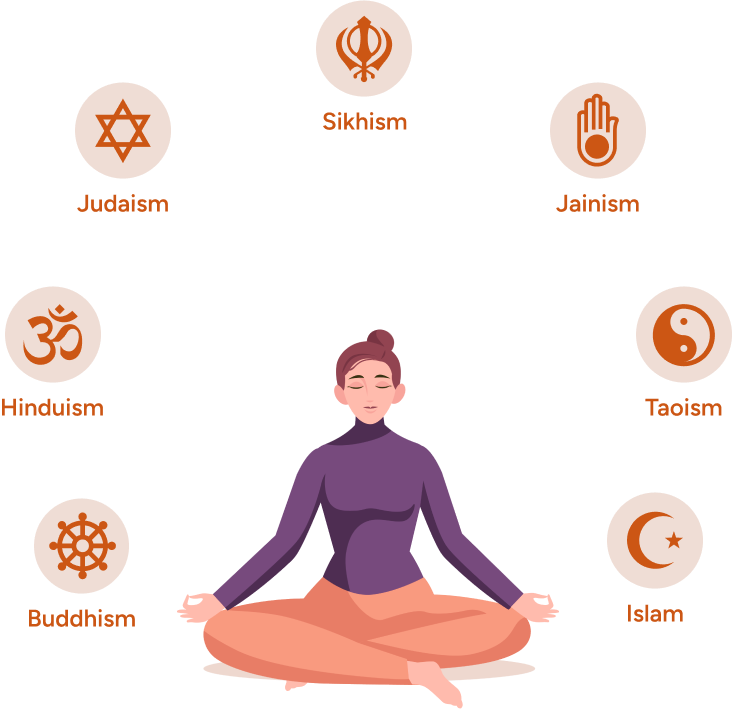
While meditative methods performed typically vary depending on religion, spiritual disciplines, and culture, there are several general components that define meditation, including focus, emotional release, reflection, spiritualism, and mindfulness.
10 Popular Meditation Techniques
Meditation comes in many forms which are suited to many preferences and emotional needs. No form of meditation is deemed ‘better’ than another, as each method serves its own unique purpose. Here are 10 popular forms of meditation techniques that are widely practiced today:
Mindfulness
Meditation:
This involves mental training practices, such as breathwork, to help slow and control thoughts and release negativity to achieve a came mental and physical state.
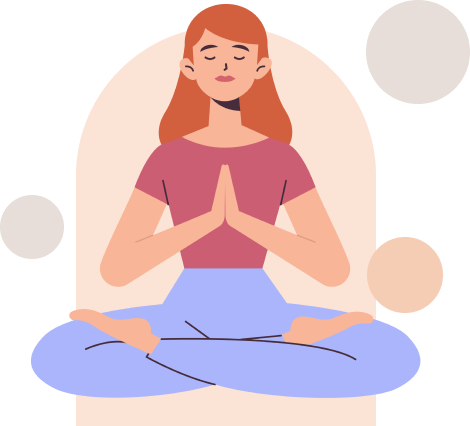
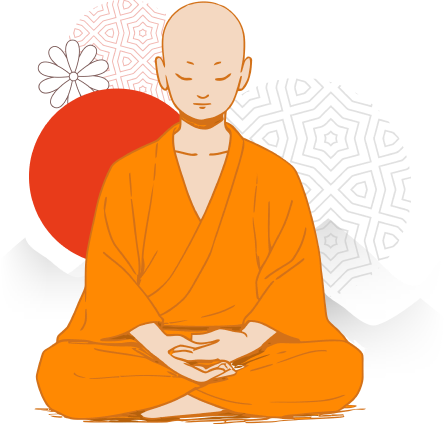
Zen
Meditation:
Rooted in ancient Buddhism, Zen meditation involves a set of traditional practices, including breathwork and maintaining an upright posture, to achieve a clear mind and foster presence.
Mantra
Meditation:
This method is popular in Buddhism and Hinduism and involves breathwork combined with repeating a mantra which is a word, syllable, or phrase that’s chanted.
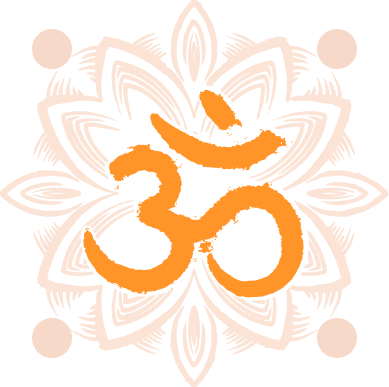
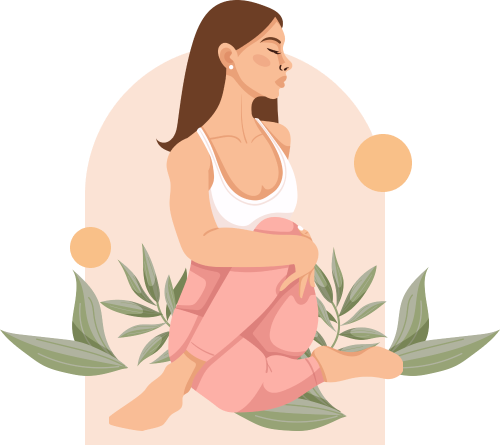
Yoga
Meditation:
‘Yoga’ is a blanket term for many forms of meditative postures and movements, such as Savasana (corpse/relaxation pose) and Balasana (child’s pose), which collectively help you tune into your body and soul, to reduce stress, build strength, and foster self-discipline.
Vipassana
Meditation:
Centered on self-awareness and transformation, this ancient Buddhist practice encourages you to contemplate key elements of human existence through mindfulness methods and breathwork.
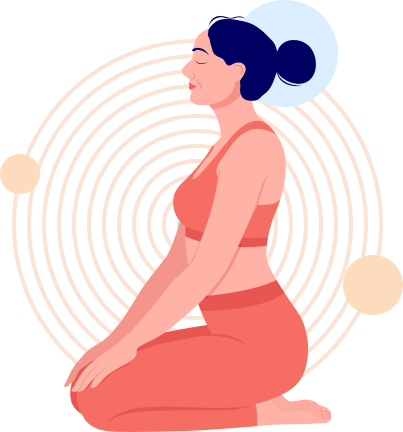
Chakra Meditation:
This ancient Vedic practice involves focusing on each of the seven Chakras: the Crown Chakra, Third-Eye Chakra, Throat Chakra, Heart Chakra, Solar Plexus Chakra, Sacral Chakra, and Root Chakra through breathwork methods and mental visualization. This practice is intended to release stagnant energy and promote balance throughout the mind, body, and soul.
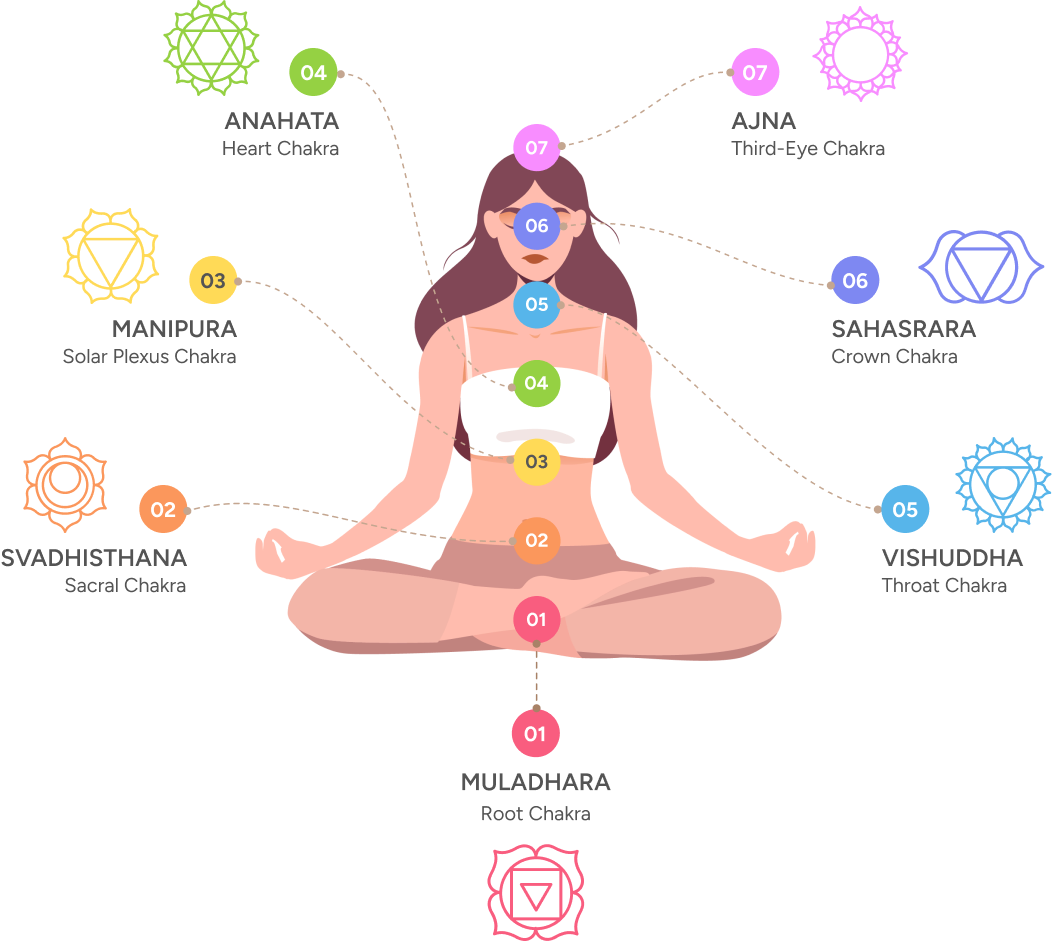
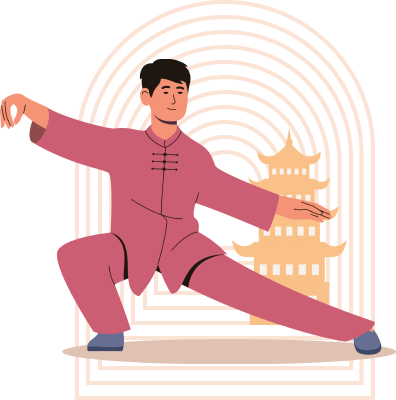
Qigong
Meditation:
Founded on ancient Chinese practices that involve channeling the body’s energy through energy paths known as ‘meridians’, this meditation technique sends energy inward, to promote self-healing and improve your body’s function. It also encourages the flow of outward energy to heal others.
Sound Bath
Meditation:
Sound bath healing traces back to several ancient civilizations, including ancient Egypt, China, Tibet, and India, and involves reverberating vibrational sound-waves to promote relaxation.
This is performed using a range of instruments, including gongs, Tibetan singing bowls, and standing bells.
gongs
Tibetan singing bowls

standing bells
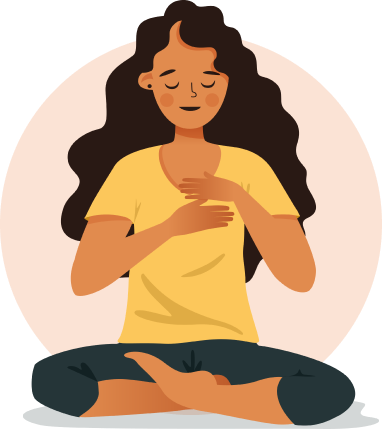
Loving-Kindness
(Benevolence) Meditation:
This method is found in Buddhism and involves channeling empathy, love, friendliness, and understanding towards oneself and others through positive affirmation and reflection.
Transcendental
Meditation:
This contemporary meditation technique is meant to help you easily experience contentment and relaxation through quieter thoughts.
It is practiced for 20 minutes a day, with the eyes closed.
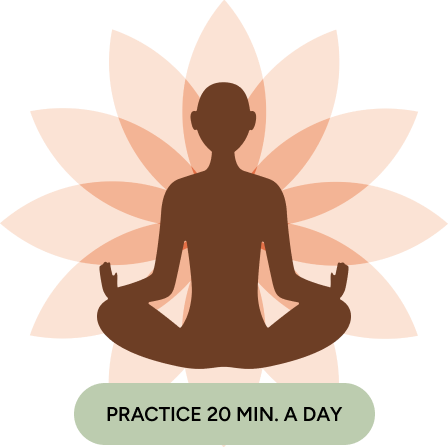
While several types of meditation techniques exist, they typically fall into these categories: guided and unguided.
01 Guided meditation
Guided meditation is suited to beginners as it involves an experienced teacher leading you through the steps of a meditative practice,
02 Unguided meditation
Whereas unguided meditation is a solo practice. you’re on your own without a teacher guiding you, unlike in guided meditation.
Techniques are also recognized as either being a calming or insight form of meditation. Calming meditation is typically performed in a soothing environment to promote a peaceful state of mind and enhanced concentration, while insight meditation encourages awareness by tapping into the breath and bringing attention to physical and mental feelings.
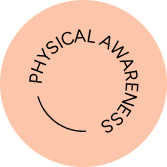
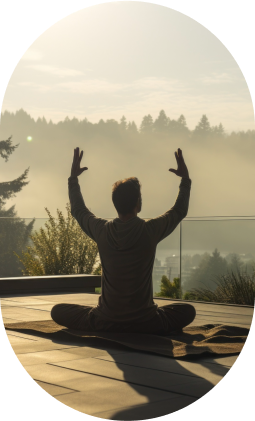
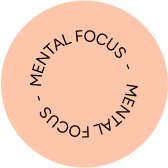

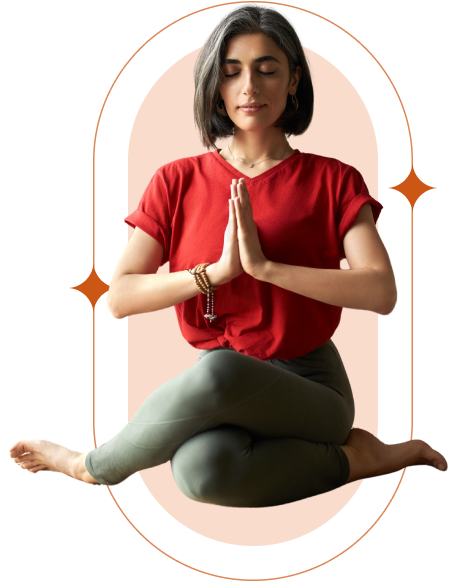
7 Benefits of Meditation for Beginners
Reduces
Stress
Improves Focus and Mental Clarity
Supports
Well-Being
Better
Sleep
Increased Self-Awareness
Physical Pain Management
Fosters Emotional Resilience
Taking up mediation is an excellent decision for anyone seeking to improve their well-being. Not only can meditation reduce unwanted feelings of stress, anxiety, and depression, it can also improve your brain’s cognitive function and empower you to better understand your mind and body.
Here are seven wonderful benefits that you can experience from meditating:
01
Reduces Stress
Techniques are also recognized as either being a calming or insight form of meditation. Calming meditation is typically performed in a soothing environment to promote a peaceful state of mind and enhanced concentration, while insight meditation encourages awareness by tapping into the breath and bringing attention to physical and mental feelings.
In fact, studies suggest that meditation — particularly mindfulness meditation — can lower levels of cortisol (the stress hormone) in the blood, meaning it can help lower feelings of stress and even decrease stress-related health conditions, such as migraines, certain psychiatric disorders, and peptic ulcers.
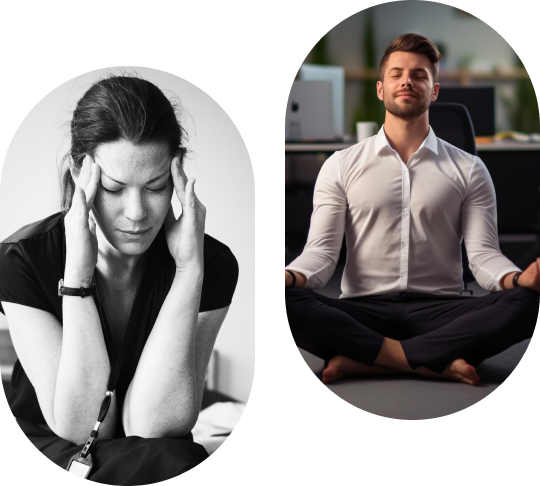
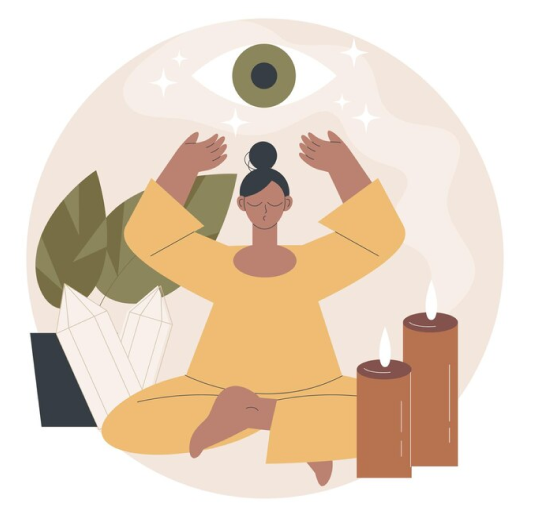
02
Improves Focus and Mental Clarity
In today’s society, it’s extremely common for the mind to wander and be overwhelmed with thoughts, which causes distraction and even brain fog.
Many methods of meditation focus on cultivating a clear and focused mind, which can lead to sharpened concentration and an improved attention-span. This translates to better task performance and management of daily responsibilities, such as work or school-related tasks.
03
Supports Well-Being
Meditation supports various aspects of your well-being, including your emotional, spiritual, and physical well-being.
The holistic nature of meditation can help you connect with the mind and body, which promotes a harmonious balance of your overall wellness, offering an improved sense of inner serenity, happiness, self-awareness, and much more! This allows you to enjoy a healthier and more fulfilling way of life.
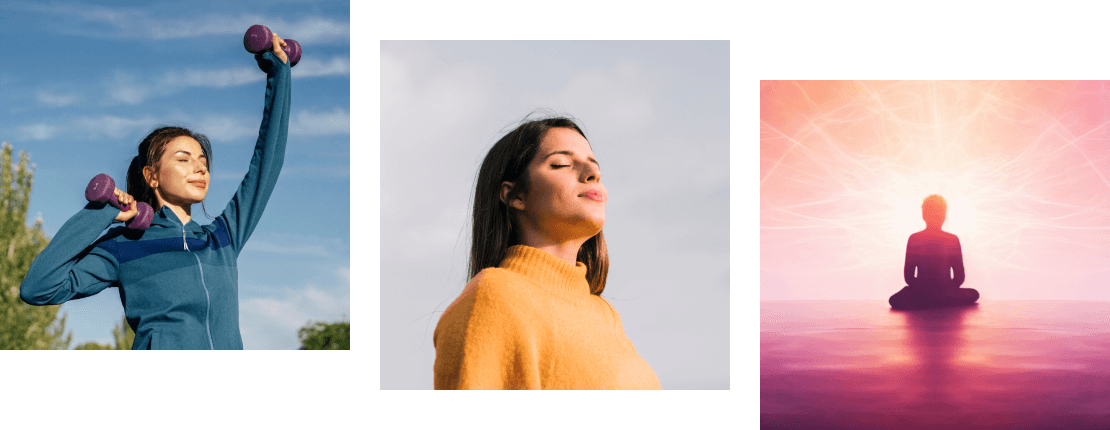
04
Better Sleep
Many methods of meditation can help you achieve a state of relaxation, such as breathwork and mindfulness.
Not only can meditation improve the quality of sleep, but it can also lengthen sleep duration, reduce disturbances, minimize symptoms of insomnia, and promote the natural sleep-wake cycle. By achieving better sleep through meditative practices, you can also experience an improved quality of life, as you’ll feel more energized and focused during the day.

05
Increased Self-Awareness
Meditation practices, such as transcendental and qigong meditation, encourage you to develop a heightened awareness of your inner thoughts and emotions.
By cultivating a deeper understanding of yourself, you can foster self-acceptance and achieve inner peace. This can also lead to improved interpersonal relationships, as you will be more attuned to your needs and preferences, as well as the needs of others.
06
Physical Pain Management
Many meditation techniques, including breathwork, can alter the perception of pain and increase pain tolerance through increased relaxation and reduced stress. This helps redirect your attention from the physical pain you are experiencing, allowing you to detach from the sensation and cope more effectively.
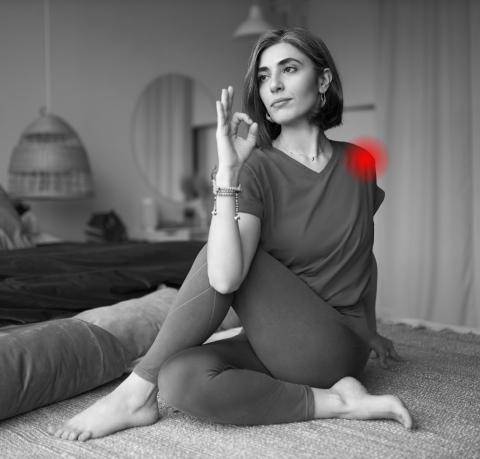
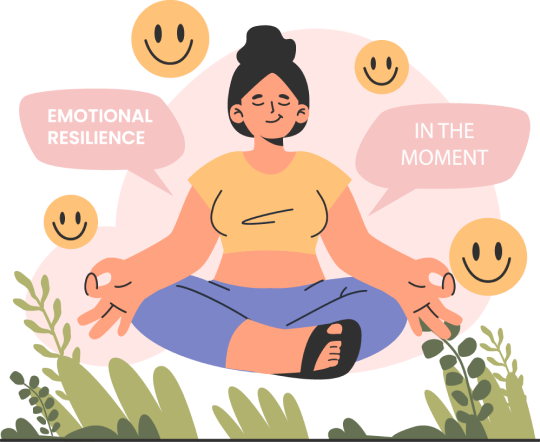
07
Fosters Emotional Resilience
Because meditation provides stress relief and increased self-awareness, it opens a gateway for emotional resilience.
This is because meditation practices promote self-observation of one’s emotional landscape and triggers while also teaching ways of minimizing unwanted feelings. These factors enable you to develop emotional resilience, which empowers you to better navigate emotionally challenging situations, and maintain a balanced and composed state of mind.
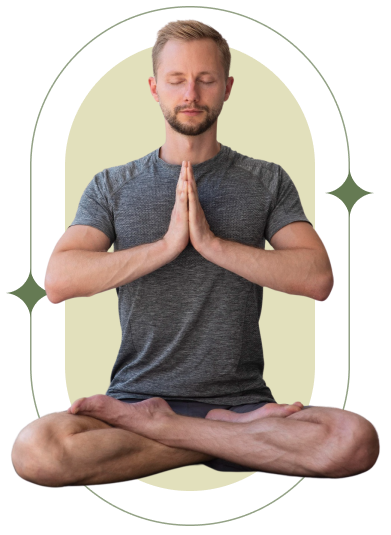
Getting Started with Meditation
Embarking on a meditation journey can be transformative, especially when approached with patience and an open mind. Not only will meditation help you deepen your understanding of yourself and help you manage your emotions, it will also encourage the discovery of inner peace.
When beginning your meditation path, it’s essential to ensure you regularly dedicate time for your practice so you can create a consistent routine and reap the benefits of meditating.
It’s also paramount to set realistic expectations. While meditation is proven to better the mind and overall well-being, it’s not a miracle remedy that will change your life after one session. Meditation takes patience and commitment to unlock its full potential and reap the long-term benefits.
Questions To Ask Yourself When Choosing A Meditation Method
It’s important to choose a meditation method that aligns with your needs, preferences, and lifestyle, to ensure the practice fully benefits you. If you’re unsure of which method you should choose, try asking yourself these three questions:
What Are My Goals?
Is it stress relief, spiritual growth, fostering self-acceptance?
How Long Do I Want To Spend Meditating?
Different methods of meditation vary in length, how much time are you willing to dedicate?
How Do I Want To Perform My Practice?
Each form of meditation is performed differently. It can be lying down, in a seated position, moving around, in silence, with sound, and so forth.
7 Tips for Creating a Tranquil Meditation Space
Having a dedicated space for your meditation sessions poses many benefits. It will signal to your body that it’s time to unwind and reconnect with yourself, while also encouraging you to settle into a meditative headspace, ensuring you get the most out of each session.
If you’re new to meditation, you may be wondering how one creates the perfect meditation space. Luckily for you, we have curated our top tips that will undoubtedly help you fortify a comfortable meditation space that resonates with your personal preferences and needs!
01
Choose a Meditation Space
A meditation space doesn’t necessarily have to be a dedicated room, it can be anywhere you like. Whether it be among nature, such as in your garden or your local park, on your balcony, or a dedicated corner in your bedroom, there’s an endless range of places you can meditate in.
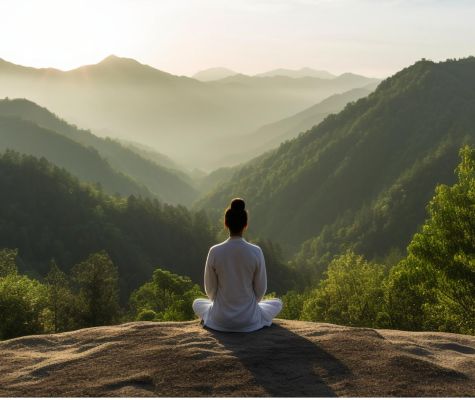
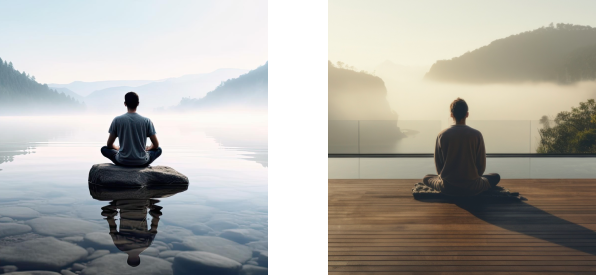
Besides choosing a comfortable space that resonates with you, another essential factor for creating an effective meditation environment is ensuring nothing can disturb you. This can be achieved by either going somewhere remote or by setting boundaries with the people you live with, ensuring they know not to disturb you during your sessions.
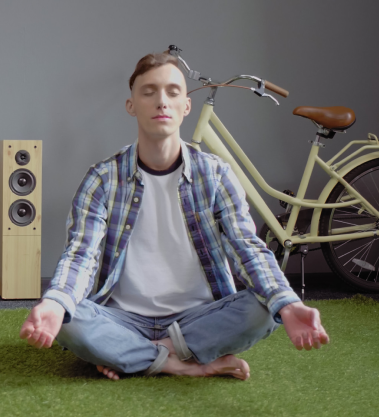
02
Decide Between Silence and Sound
While some people enjoy mellow background noise, such as music or bird’s chirping, others prefer complete silence. If you are choosing to meditate with sound, you could install speakers in your space, and if you need complete silence, you could opt for soundproofing methods, like acoustic panels and bass traps.

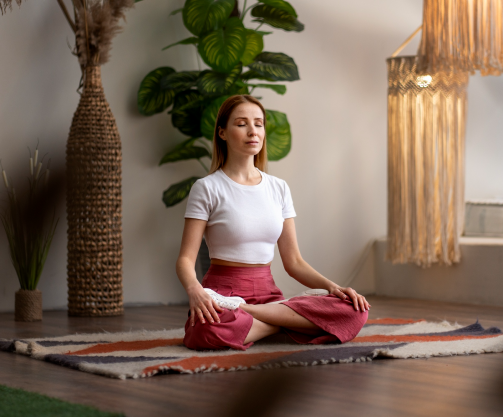
03
Ensure Your Space Is Uncluttered
Clutter is scientifically proven to disrupt our focus and cause cognitive overload, which can make meditation tricky. Ensuring your space is free from clutter will ensure a sense of calm and help you achieve a clear and relaxed headspace. This will empower you to focus entirely on your meditation session, ultimately enhancing the effectiveness of your practice.
04
Decorate Your Space
Filling your meditation space with comforting interior decor will help you fortify a therapeutic environment that soothes your mind so you can meditate comfortably and effectively. Opting for minimal features and soft tones, rather than eye-catching statement pieces and bold colors, will ensure your space is relaxing and visually pleasing, while minimizing distractions.
One of the best forms of decor for meditation spaces are plants. Being surrounded by natural foliage is clinically proven to alleviate physiological stress and negativity in the mind.
It’s also important to mindfully choose which colors you want in your meditation space as different colors can ignite certain emotions. For instance, blue can evoke feelings of peace and calmness, green can bring forth serenity and balance, yellow can encourage happiness, and so forth.

05
Create a Calming Ambience with Soft Lighting
Lighting is a major element that dictates the ambience of a space — it can also impact your mood and comfort. It’s therefore key to choose lighting that is soft, to ensure you create a pacifying sensory experience that encourages you to completely surrender to your practice.
Before choosing artificial lighting, we advise prioritizing the flow of natural light in your meditation space. Natural light is scientifically proven to have a positive effect on mental well-being and overall wellness. Studies have indicated that natural light can boost our happiness and reduce stress.
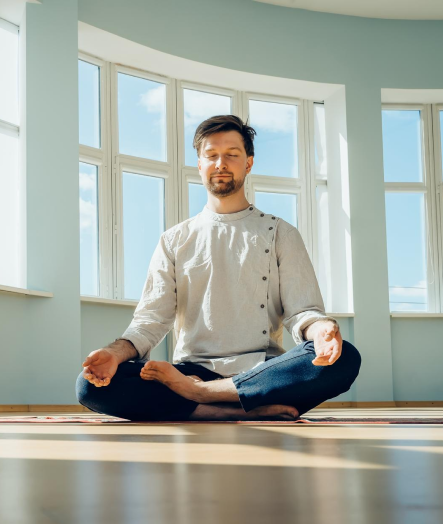
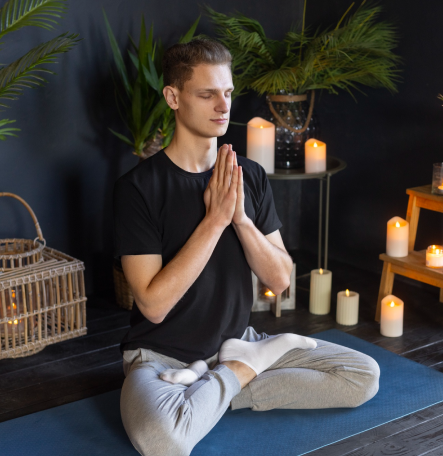
Candle light is another excellent form of lighting that can encourage a positive and calm mind. The gentle flicker of candle flames also serve as focal points that can help you get into a meditative mindset.
When choosing artificial lighting, we recommend opting for dimmable lights, as this provides you with the flexibility of adjusting the brightness in your space according to your preferences.

06
Include Soft Furnishings
Soft Furnishings is key to creating a comfortable and restorative meditation space. Arranging your room with pillows, blankets, sofas/lounge chairs, poufs/ottomans, rugs, beanbags, and so forth, will provide you with a cozy and inviting atmosphere, while accommodating a range of meditation postures.
By achieving complete comfort with soft furnishings, it will be easier to fully immerse yourself in your practice.
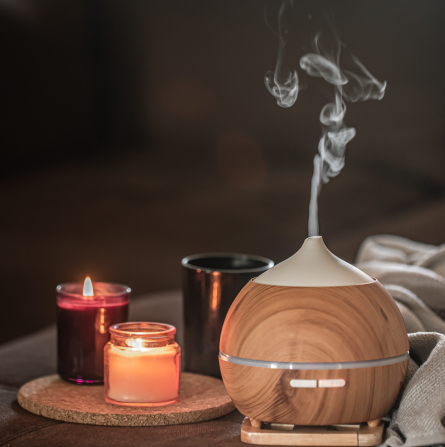
07
Consider Aromatherapy
Aromatherapy is believed to have a positive effect on the mind, with certain scents eliciting different moods and emotional responses. For instance, lavender can supposedly encourage stress relief and relaxation, whereas citrus scents, such as bergamot, can provoke an uplifting and energizing feeling.
You can incorporate aromatherapy into your practice in many ways (such as essential oil diffusers, scented candles, and incense) to add an extra sensory dimension that compliments your meditative state.
Basic Postures for Meditation
Whether you enjoy being seated, standing, or lying down, there’s a multitude of positions that you can meditate in, such as:
Regardless of which posture you choose, it’s essential to always ensure your body is stable and comfortable.
This involves maintaining a straight spine and an open chest to help you breathe easily. In doing so, you’ll be able to meditate for long periods of time with no disturbances caused by discomfort.
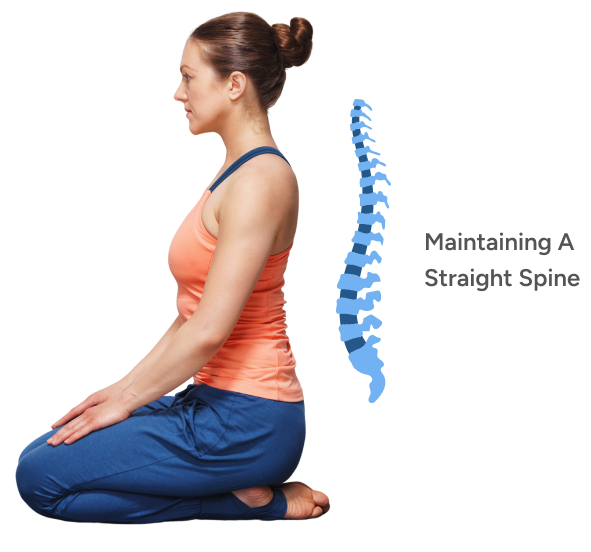
Important Note:
If you struggle to hold a posture during meditation because of physical restrictions or injury, you may find ergonomic furniture beneficial, such as lumbar support seating or reclining sofas — an excellent option if you enjoy meditating in a reclined position on your back!
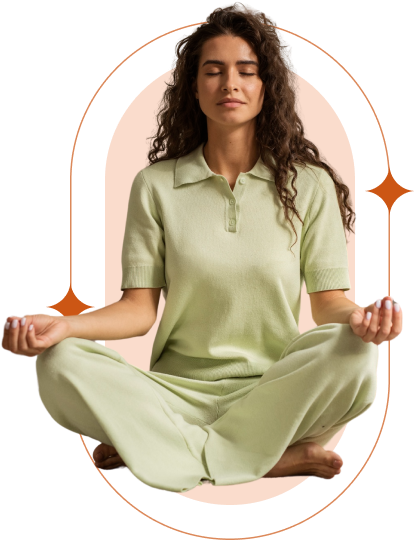
Mindfulness in Meditation
Although mindfulness is a meditative practice in itself, it also translates across many other forms of meditation, including Vipassana meditation. The literal meaning of mindfulness is the awareness of what we are experiencing physically, emotionally, and mentally.
By incorporating mindfulness into daily life, you can foster a heightened sense of self-awareness in the present moment, and thus develop emotional control and experience inner-peace.
Overcoming Common Challenges When Maintaining Mindfulness
There are a few obstacles that you may face when trying to maintain mindfulness, such as struggling to connect with your present self. However, with consistent practice and dedication, these challenges can be overcome. Here are some common challenges and fixes when maintaining mindfulness:
Emotional Reactivity
If you’re caught up in an emotional storm, whether it be stress, upset, or anger, you may struggle to maintain focus on yourself and be present.
Ensuring you are patient with yourself, and understand that mindfulness isn’t just about focusing on the good, can help you better approach your emotional reactivity and understand why you’re feeling the way you do.

Intrusive Thoughts
As humans, we naturally have our own internal dialogue that narrates our lives. Our self-narratives can often invade our minds with negativity, such as self-doubt, self-absorption, and self-judgment.
Reminding yourself that these thoughts don’t define you, and are simply a passing mental phenomena can help you direct your thoughts on what matters, and empower you to create a constructive mental environment.
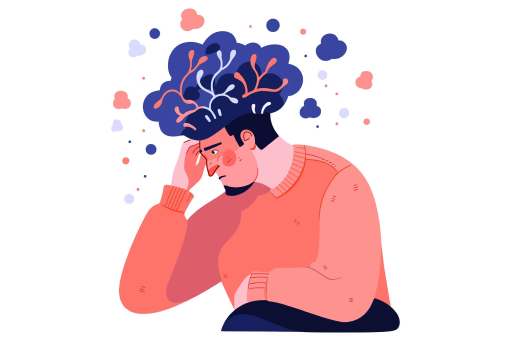
Time Management
It’s common for people to struggle to dedicate time in their day for mindfulness. You should never rush your mindfulness practice, but it also doesn’t take much time to make a meaningful impact on your wellness. This means you can practice mindfulness for just a few minutes each day without disrupting your routine.
We recommend you choose a time that’s convenient for you, such as in the morning, at lunchtime, or before bedtime. If you’re forgetful, you can set a daily alarm to remind you. As you grow more comfortable when pausing to practice mindfulness, you can begin to gradually allow more time for it in your daily life.
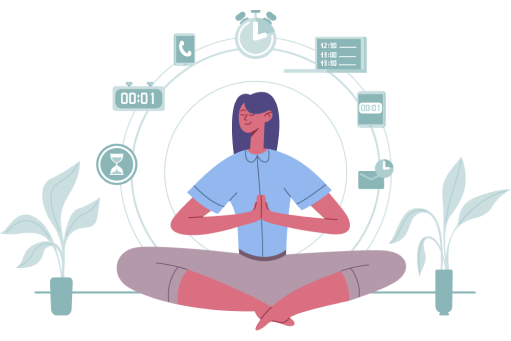
Distractions
There are many kinds of distractions that can divert your attention from your mindfulness practice. Key examples of common distractions include technology, people, and even hunger.
Ensuring you turn off your technology and keep it out of sight during your mindfulness exercise will allow you to fully focus on yourself, without the worry of a phone call or text disturbing you.
It’s also worth finding a meditation space away from your friends and family to ensure no one disrupts your practice. Alternatively, you can clearly communicate that you are engaging in mindful practice and wish to be alone and undisturbed for the duration.
Hunger is another common distraction. When you’re hungry, your mind will naturally beeline on food, resulting in no room for mindful thoughts. Ensuring you regularly nourish your body with food will prevent this distraction, enabling you to focus on your emotional, physical, and mental wellness.

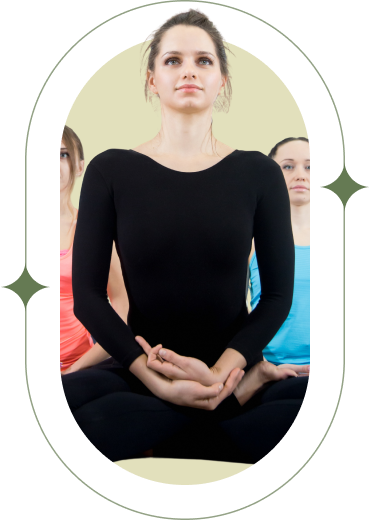
Guided Meditation for Beginners
If you’re a newbie to meditation, it’s extremely important to ensure you seek guided help, so you can learn the right methods while receiving structured support from a professional or a specialized platform. This will allow you to develop an in-depth understanding of meditation practices and establish a sturdy path for your journey.
To give you a glimpse of what guided meditation looks like, we have created a set of sample guided meditation scripts and provided beginner-friendly instructions for effective breathwork exercises in this section.
Sample Guided Meditation Script for Beginners
Here’s a mindful meditation script we created to help you connect with your body, mind, and soul:
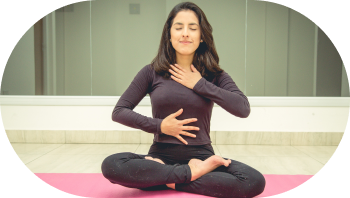
Step 1: Set the Scene
Settle into a comfortable position and gently close your eyes. Place one hand on your chest, and the other on your stomach and deepen your breath.

Step 2: Focusing on the Breath
Notice the sensation of each inhale and exhale. How your chest rises and falls, how your stomach expands and deflates. Try lengthening each inhale and slowly releasing your breath with control upon the exhale.
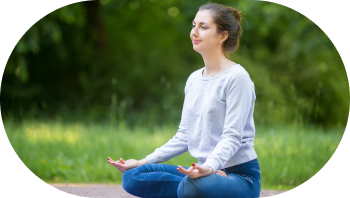
Step 3: Guide Your Focus To Your Body
Release your hands from your chest and belly, letting them gently flop either side of you. Feel the sensations in your body starting from your toes and working up toward the crown of your head.
Notice if there is any tension being held. Are you squeezing your fists, clenching your jaw, tensing your shoulders? Try to release this tension with each exhale, sinking deeper into your position.

Step 4: Acknowledge Your Thoughts
Guide your focus from your physical being to your mind. Acknowledge what emotions you’re feeling and try to identify the root of those emotions. What’s causing you to feel this way? Do you enjoy this feeling? If you are experiencing negativity or stress, try to release it with each exhale and invite positivity into your body with each inhale.

Step 5: Gratitude and Closing
Bring your attention back to your breath. Take a moment to reflect upon something you’re grateful for in this present moment. With each inhale, welcome gratitude into your being, and as you exhale, release any lingering tension and negativity being stored in your mind and body.
Gently flutter your eyes open, bringing awareness back to your surroundings, and continue your day with your newfound sense of mindfulness.
Breathing Techniques for Mindful Meditation
Diaphragmatic breathing (also known as ‘deep breathing’) is clinically proven to ease stress and provoke a relaxed mind and body. There are many forms of meditative breathing exercise that can help you mindfully reconnect with yourself. Here’s an overview of some popular and effective techniques:

The Lengthening Method
Involves making your exhales longer, which slows both the heart rate and racing thoughts.
This can either be done by inhaling for the count of two and exhaling for the count of four, or inhaling for the count of three and exhaling for the count of six.
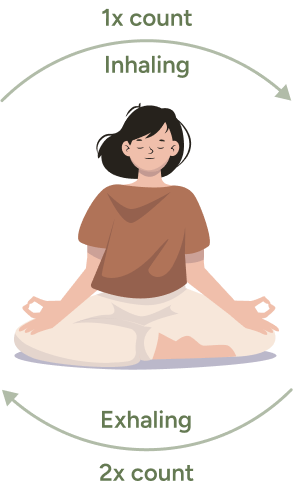
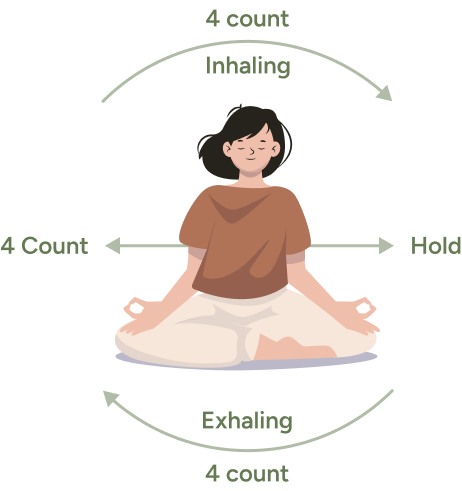
The Box Method
This requires you to inhale, hold your breath, and exhale for the same number of counts.
For instance, you can inhale for the count of four, hold your breath for the count of four, and exhale for the count of four, before repeating the cycle.
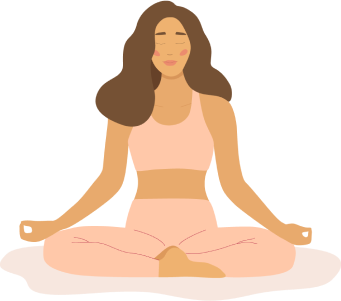
Inhales Through The Nose
The Belly Breathing Method
This draws attention to the rise and fall of your belly as you take slow and deep inhales through the nose and controlled exhales through the mouth.
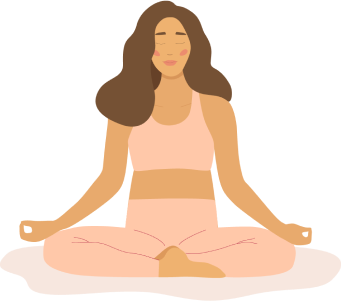
Exhales Through The Mouth
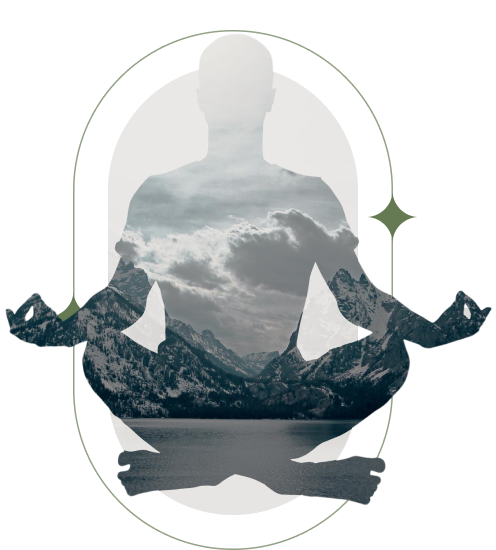
Mediation’s Role in Personal Reflection and Growth
Meditation poses as a powerful tool for spiritual and emotional growth and reflection. The intentional and enlightening nature of meditation paves the road for a journey of self-discovery, and encourages you to develop and improve aspects about yourself, so you can become the best version of yourself!

There’s a plethora of ways you can monitor your self-reflection and track your growth. One fantastic method is journaling.
Keeping a daily journal of your feelings and experiences can help you pinpoint important aspects of your relationships, emotional responses, and overall character, helping you foster a stronger understanding of yourself and being able to constructively identify any areas you wish to improve.

You could also connect with a meditation community, whether it be in-person or online.
Not only will you be able to connect with fellow meditators and receive and share tips, you’ll also be invited to regular group meetings where you can reflect upon yourself with the help of a supportive network.
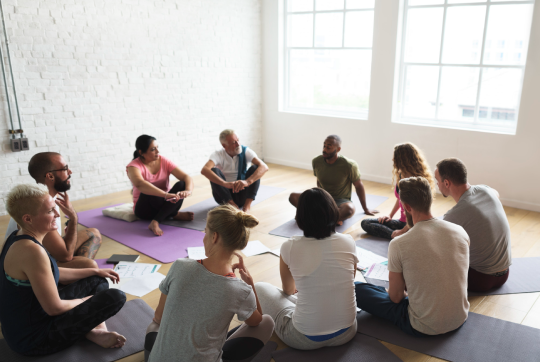

Resources for Further Learning
There are many educational mediation materials available that will help kick-start your wellness journey. To save you the time and effort of sourcing information yourself, we have gathered our top picks for meditation resources, including books, apps/online platforms, films, and shows.
Recommended Books for Meditation Beginners
There’s an endless library of brilliant books centered on meditation and mindfulness. Here are some top-notch reads for any bookworms looking to learn about meditation:
‘Mindfulness for Beginners: Reclaiming the Present Moment and Your Life’
Author:
Jon Kabat-Zinn
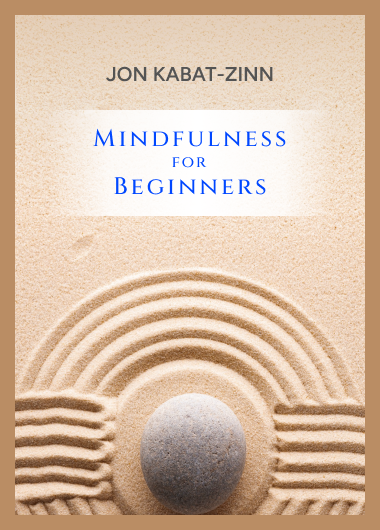
Written by an acclaimed professor emeritus from the University of Massachusetts Chan Medical School, this book encourages readers to acknowledge their automatic thoughts and natural reactions.
‘Zen Mind, Beginner’s Mind’
Author:
Shunryu Suzuki
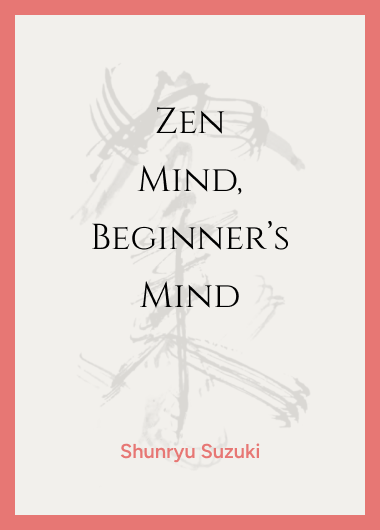
Written by a late Japanese priest who’s deemed the godfather of Zen, ‘Zen Mind, Beginner’s Mind’ offers a deeply insightful introduction to the art of Zen practice, through a collection of spiritual teachings.
‘The Headspace Guide To Meditation & Mindfulness’
Author:
Andy Puddicombe
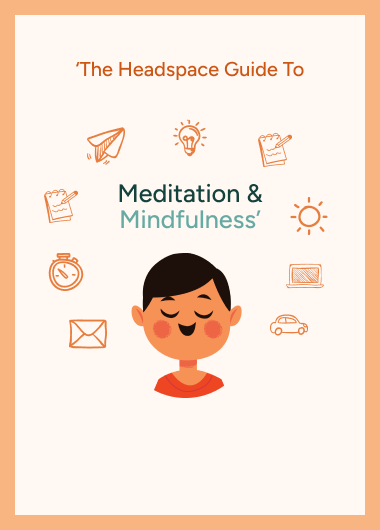
A former Buddhist monk, who founded the largest meditation platform Headspace, composed the Headspace Guide To Meditation & Mindfulness’. This beginner-friendly guide unveils a range of meditation techniques, encouraging readers to be mindful during every stage of life.
The Best Meditation Apps and Online Platforms
Modern technology has unlocked an entirely new world of virtual meditation, enabling you to unwind at the tap of a finger! Here are our top meditation app/platform picks:
Headspace
Available on:
Founded by Andy Puddicombe, an author and former Buddhist monk, Headspace offers an interactive interface and boasts an extensive library of meditation courses suited to a range of needs and preferences. Whether you’re looking to build your self-esteem or overcome feelings of anxiety, Headspace has all the tools you need to effectively meditate and reach your goals.
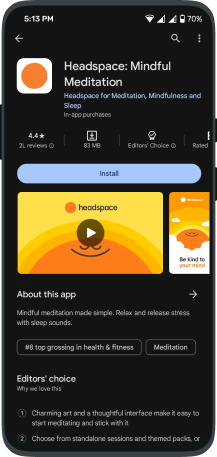
Ten Percent Happier
Available on:
Ten Percent Happier is ideal for meditation newbies, as it features hundreds of easy-to-follow guided meditation exercises, which are designed to cater to inexperienced individuals. It also provides live group sessions, enabling you to interact with others and ask questions.
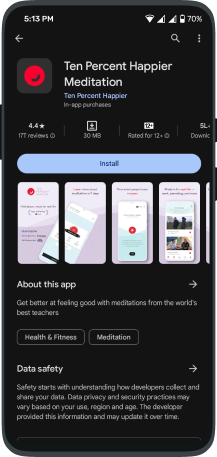
Calm
Available on:
Offering personalized content that’s designed to help manage feelings of stress, anxiety, and restlessness, Calm is the perfect meditation tool for unwinding your mind and body, and achieving happiness. It’s also an excellent platform for monitoring self-development as it records your personal stats, such as your mood and the number of sessions you have completed.
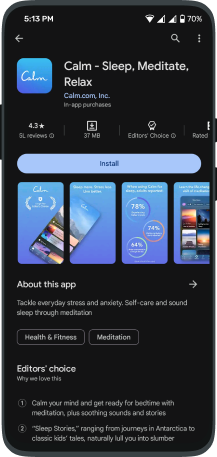
Show Stopping Meditation Movies
If you’re in search of an insightful documentary that showcases the wonders of meditation, you’re in the right place! Here are our favorite meditation movies to watch in your home theater:
‘Meditation, Creativity, Peace’
Director: David Lynch
Released: 2012
‘Meditation, Creativity, Peace’ follows critically acclaimed director David Lynch as he embarks on a 16-country tour, unfolding how transcendental meditation connects creative energy with peace and happiness.
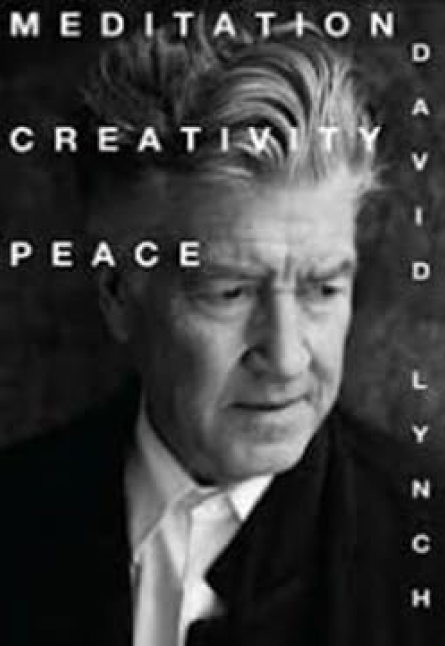
‘The Mindfulness Movement’
Director: Robert Beemer
Released: 2020
Examining the impact of mindfulness, ‘The Mindfulness Movement’ offers an emotionally compelling real-life tale of how several people’s lives have transformed for the better because of mindfulness meditation.
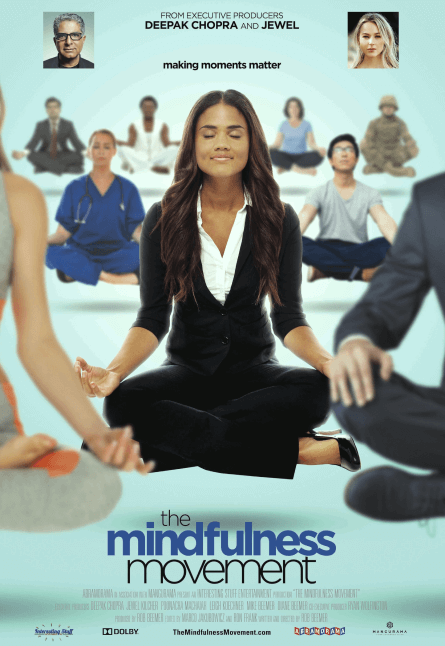
‘Awake: The Life of Yogananda’
Directors: Paola di Florio & Lisa Leeman
Released: 2014
Focused on ancient teachings and examining how meditation became popularized in the West, ‘Awake: The Life of Yogananda’ is a compelling documentary that traces the roots of sacred meditation. It follows yogi and guru Paramahansa Yogananda, over three years, revealing his journey of self enlightenment and his impact on introducing Eastern spiritualism into the Western world.
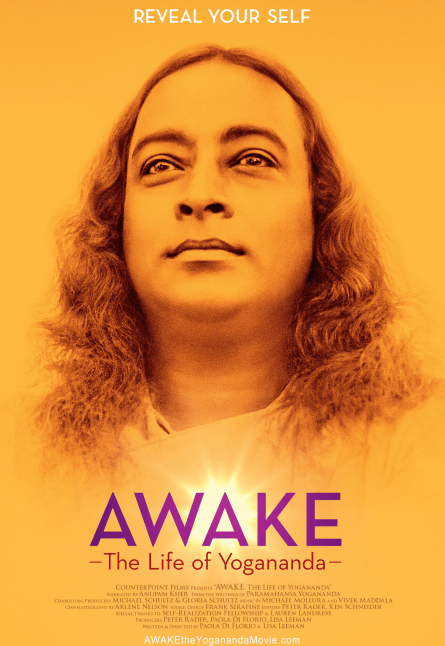
Further Reading
- Meditation for Beginners
- Meditation 101
- Meditation for Beginners: 20 Practical Tips for Understanding the Mind
- How to Start Meditating: Five Meditation Techniques for Beginners
- 28 Best Meditation Techniques for Beginners to Learn
- A Beginner’s Guide to Meditation
- Five Meditation Tips for Beginners
- The Best Meditation Apps for Beginners
- Everything You Need to Start Meditating
- How to Begin: Find a Comfy Chair and Relax
- Six Tips To Help You Start Meditating
- Beginning Mindfulness Meditation Practices
- Create Your Own Meditation Space
- Create a Meditation Space in Your Home
- Meditation: A Simple, Fast Way to Reduce Stress
- Choosing a Quiet Seat for Meditation
- How to Meditate: Tips for Beginners
- Which Meditation Routine Is Right for You?
- Forget Sitting in the Lotus Position: How to Meditate ADHD-Style
- Five Ways to Practice Mindfulness Right Now
- You Can Practice Mindfulness in as Little as 15 Minutes a Day
- Mindfulness Definition
- About Mindfulness

A Final Thought…
As you have surely gathered from our extensive article, meditation presents a myriad of benefits, such as stress relief, enhanced self-awareness, and happiness. It emerges as a holistic and transformative practice for maintaining wellness and improving one’s quality of life.
If you are embarking on a meditation journey, it’s paramount to always remember that achieving inner-peace is a gradual journey, and that each moment of mindful awareness draws you closer to the enriching and endlessly rewarding benefits.
What do I need to start meditating?
To start meditating, you will need a quiet and comfortable space where you can sit or lie down. It’s important to set aside dedicated time for meditation and ensure that you won’t be disturbed. You may also want to have a meditation cushion or a chair that supports good posture. It might be helpful to have a timer or a meditation app to track your meditation sessions. Additionally, having an open and receptive mindset is crucial for starting meditation.
How often should I meditate?
How often you meditate depends on your preferences and goals. Some people meditate daily, while others do it a few times a week. Find a routine that works for you and allows for consistent practice. Consistency is important for reaping the benefits of meditation, so having a regular schedule is recommended. Start with shorter sessions and gradually increase the duration to build a sustainable practice. Ultimately, meditate as often as your individual needs require and what feels right for you.
What is the best time to meditate?
The best time to meditate differs for everyone, as it ultimately depends on personal preference and schedule. However, many people find that meditating in the morning, right after waking up, can be beneficial as it helps set a calm and focused tone for the day ahead. Others may prefer meditating in the evening, after work, to unwind and relax before bedtime. Experimenting with different times of day can help individuals determine what works best for their own meditation practice.
Where should I meditate?
You can meditate in various places depending on your preference and what makes you feel comfortable and relaxed. Some common options include a quiet room at home, a peaceful outdoor setting such as a park or garden, a dedicated meditation space, or even a local meditation center or studio. Ultimately, it is important to choose a location where you can find peace, quiet, and minimal distractions to immerse yourself in the practice of meditation fully.
How long should I meditate?
The duration of meditation varies from person to person. It is recommended to start with shorter sessions, such as 5-10 minutes, and gradually increase the time as you become more comfortable and experienced. Ultimately, the goal is to find a duration that works best for you, whether it’s 20 minutes, 30 minutes, or even longer. The key is to establish a consistent meditation practice that suits your needs and allows you to experience the benefits of mindfulness.
What is the best time to meditate?
The best time to meditate can vary for each individual. Some people prefer to meditate early in the morning before starting their day, as it helps to set a positive tone for the rest of the day. Others may find that meditating in the evening is more beneficial, as it allows them to unwind and let go of any stress or tension from the day. Ultimately, the best time to meditate is whenever you can dedicate a few moments to yourself and find a peaceful environment to practice mindfulness.
What are the benefits of meditation?
The benefits of meditation are numerous. It can help reduce stress and anxiety, improve focus and concentration, increase self-awareness and mindfulness, promote emotional well-being, enhance creativity and problem-solving abilities, boost overall mental and physical health, and improve relationships. Additionally, regular meditation practice has been shown to have long-term effects on cognitive function, memory, and attention span.
What does meditation do?
Meditation has numerous benefits for both the mind and body. It helps to calm and quiet the mind, reducing stress and anxiety. Regular meditation practice can improve focus, concentration, and memory. It also promotes self-awareness and mindfulness, allowing individuals better to understand their thoughts, emotions, and behaviors. Additionally, meditation has been found to enhance overall well-being, promote feelings of relaxation and inner peace, and even improve physical health by lowering blood pressure and boosting the immune system.
What are the 4 Rs of meditation?
The best streaming service for people who dislike ads would be a subscription-based service such as Netflix or Amazon Prime Video. These platforms offer a wide range of content without interrupting the viewing experience with advertisements. Additionally, some premium subscription tiers on platforms like Hulu and YouTube also provide ad-free options for a higher monthly fee. Ultimately, it depends on personal preferences and the specific content one is looking for, but subscription-based services are generally the best choice for an ad-free streaming experience.
How do I make mindfulness a habit?
To make mindfulness a habit, it is important to start small and gradually increase your practice. Here are some steps that can help:
- Set specific goals: Determine how often and for how long you want to practice mindfulness each day. Start with a realistic goal that you can easily achieve.
- Prioritize mindfulness: Treat mindfulness as a non-negotiable part of your daily routine. Set a specific time and place for your practice and stick to it, just like you would any other important appointment.
- Start with short sessions: Begin with short mindfulness sessions, such as 5-10 minutes, and gradually increase the duration as you become more comfortable and experienced.
- Integrate mindfulness into your activities: You don’t need to limit mindfulness to formal meditation sessions. Practice mindfulness while performing routine tasks, such as brushing your teeth or eating, by focusing all your attention on the present moment.
- Use reminders: Set reminders or alarms on your phone to prompt you to take moments of mindfulness throughout the day. These reminders can help reinforce the habit and keep you consistent.
- Find accountability: Share your mindfulness journey with a friend or join a mindfulness group. Having someone to hold you accountable can motivate you to stay on track and make mindfulness a consistent habit.
- Be patient and gentle with yourself: Remember that building a habit takes time and effort. Be patient with yourself if you miss a day or struggle to stay consistent. Embrace imperfection and focus on the process rather than perfection.
- Best Movie Theater Seats
- 2Pc Theatre Seats
- Theater Seat Sizing
- Recliner Chair $500
- Theater Seat Couch
- Modern Electric Leather Recliner Chair
- Sofa Online Shopping
- 4 Seater Leather
- In Stock Home Theater Seating Clearance Sale
- Home Theater Love Seat
- 2 Seat Leather
- Durable Leather Sectional
- Elite Home Theater Seating
- Theaterseatstore
- Black Leather Reclining Arm Chair
- L Shape Sectionals
- Sofa For Watching Tv
- Store For Theater Seats
- Best Chair With Footrest
- Best Oversized Sectional Couches
- Leather Theater Gaming Recliners
- Multimedia Sofa Set
- Recliner Sofa With Console
- Theatre Seat Accessories
- Azure Lhr Loveseat
- White Couches Leather
- Black Leather Sofa Modern
- Best Buy Theater Chairs
- Theater Seating Tray Table
- Microfiber Brown Couch
- Leather Light Up Couch
- Home Theater Sound Panels
- Lumbar Support In Chair
- Dark Brown Recliner Chair
- Row One Theater Seating
- Motion Loveseat With Console
- Heating Massage Sofas For Sale
- Oversized Grey Leather Recliner
- Vega Power Recliner
- Shaker Sound System
- Best Power Recliner With Heat And Massage
- Recliner Chair For Back Problems
- Best Made Recliners
- Chaise Lounge Home Theater Seating
- Projector Screen Vs Wall
- Microfiber Living Room Furniture
- Power Recline Leather Sofas
- Best Man Cave Recliner
- Entertainment Furniture Stores
- Best Couch Prices
- Theater Chair Reviews
- Large Theatre Recliners
- Couch With Cuddler
- Discount Recliner
- Genuine Leather Chairs
- Projector Brightness
- Seat Recliner Home Theater Chairs
- Microfiber Loveseat Recliner
- Giant Couches For Sale
- Movie Theatre Reclining Chairs
- Top Recliner Chairs
- Largest Video Game Companies
- Beautiful Lounges


